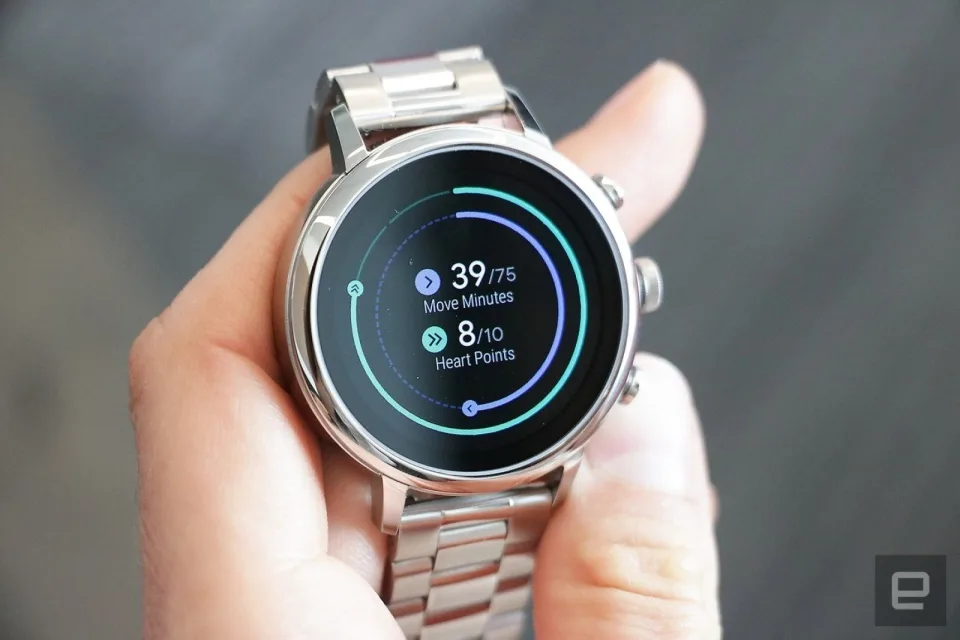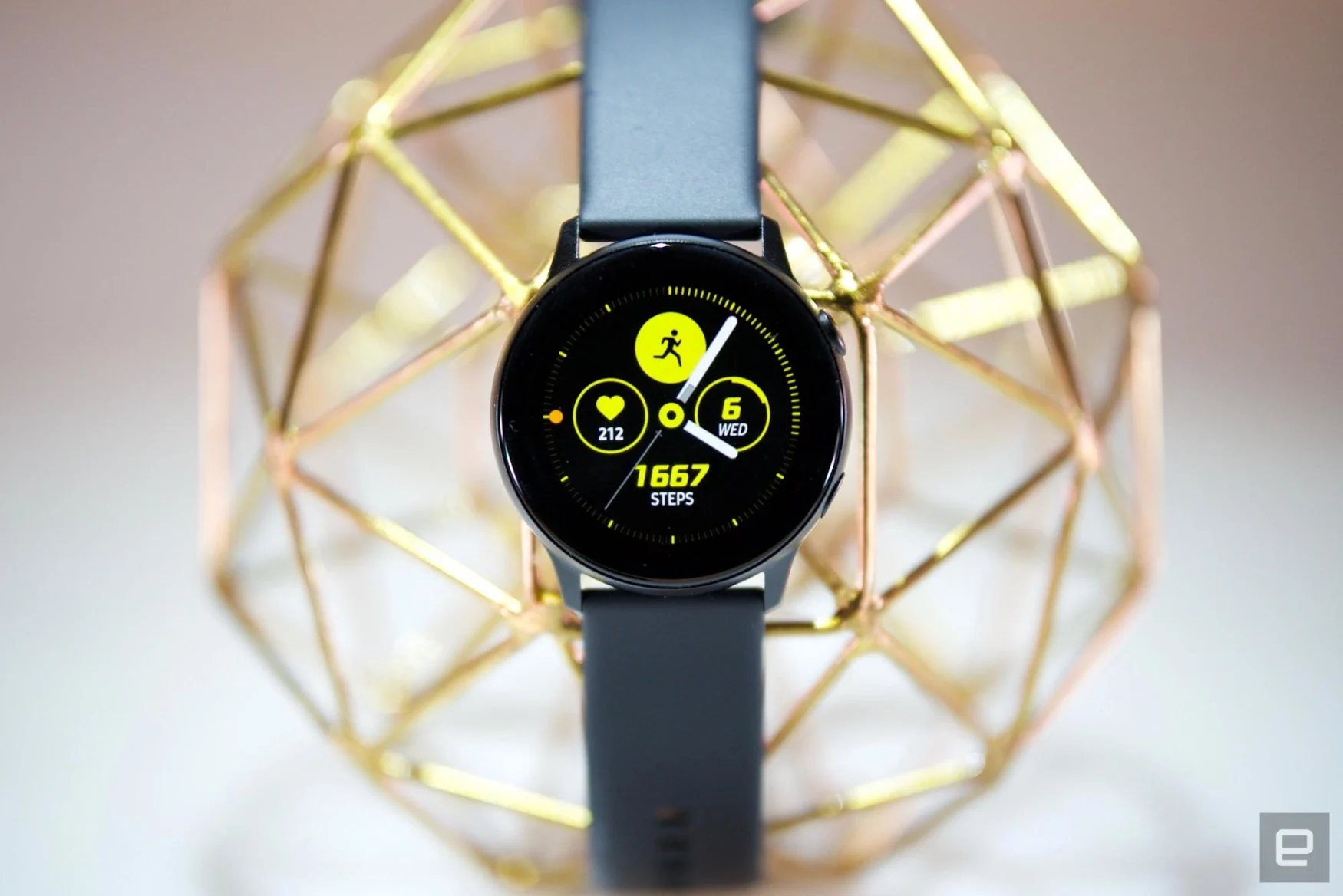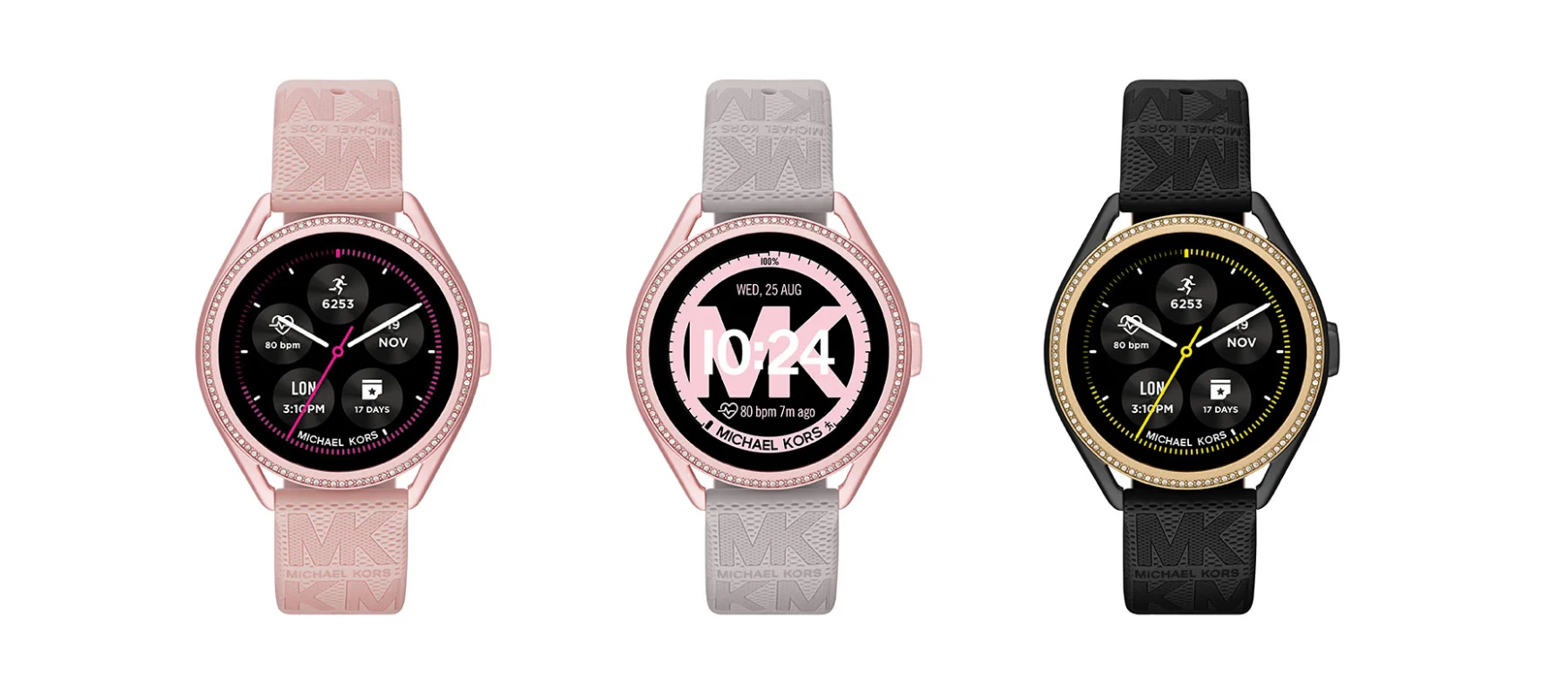Just a few years ago, the case for buying a smartwatch was unclear. The market wasn't as saturated as it is today, and features were more limited. Today, the wearable world is filled with various high-quality options, and a few key players, like the Apple Watch, Samsung Galaxy Watch and Fitbit Versa, have muscled their way to the front of the pack with their smart features. Chances are, if you’re reading this guide, you’ve probably already decided that it’s time to upgrade whatever gadget’s on your wrist - be it a standard timepiece or an aging smartwatch. Regardless of which category you fall into, the list of specs you’ll want to consider before deciding which is the best smartwatch for you to buy is a long one, and we'll help you make sense of it.
-
$399 at Amazon$399 at AmazonBest overall
Apple Watch Series 8
$399 -
$135 at Amazon$135 at AmazonBest budget
Fitbit Versa 2
$135 -
$280 at Amazon$280 at AmazonBest for Android users
Samsung Galaxy Watch 5
$280
What to look for in a smartwatch

Compatibility
Apple Watches only work with iPhones, while Wear OS devices play nice with both iOS and Android phones. Smartwatches made by Samsung, Garmin, Fitbit and others are also compatible with Android and iOS, but you’ll need to install a companion app.
The smartwatch OS will also dictate the type and number of third-party apps you’ll have access to. Many of these aren’t useful, though, making this factor a fairly minor one in the grand scheme of things.
Price
The best smartwatches generally cost between $300 and $400. Compared to budget smartwatches, which cost between $100 and $250, these pricier devices have advanced communications, music and fitness features. They also often include perks like onboard GPS tracking, music storage and NFC, which budget devices generally don’t.
Some companies make specialized fitness watches: Those can easily run north of $500, and we’d only recommend them to serious athletes. Luxury smartwatches from brands like TAG Heuer and Hublot can also reach sky-high prices, but we wouldn’t endorse any of them. These devices can cost more than $1,000, and you’re usually paying for little more than a brand name and some needlessly exotic selection of build materials.
Battery life
Battery life remains one of our biggest complaints about smartwatches, but there’s hope as of late. You can expect two full days from Apple Watches and most Wear OS devices. Watches using the Snapdragon Wear 3100 processor support extended battery modes that promise up to five days of battery life on a charge — if you’re willing to shut off most features aside from, you know, displaying the time. Snapdragon’s next-gen Wear 4100 and 4100+ processors were announced in 2020, but only a handful of devices – some of which aren’t even available yet – are using them so far. Other models can last five to seven days, but they usually have fewer features and lower-quality displays. Meanwhile, some fitness watches can last weeks on a single charge.
A few smartwatches now support faster charging, too. For example, Apple promises the Series 7 can go from zero to 80 percent power in only 45 minutes, and get to full charge in 75 minutes. The OnePlus Watch is even speedier, powering up from zero to 43 percent in just 10 minutes. (Mind you that turned out to be one of the only good things about that device.)
Communication
Any smartwatch worth considering delivers call, text and app notifications to your wrist. Call and text alerts are self explanatory, but if those mean a lot to you, consider a watch with LTE. They’re more expensive than their WiFi-only counterparts, but cellular connectivity allows the smartwatch to take and receive phone calls, and do the same with text messages, without your device nearby. As far as app alerts go, getting them delivered to your wrist will let you glance down to the watch face and see if you absolutely need to check your phone right now.
Fitness tracking
Activity tracking is a big reason why people turn to smartwatches. An all-purpose timepiece should function as a fitness tracker, logging your steps, calories and workouts, and most of today’s wearables have a heart rate monitor as well.
Many smartwatches' fitness features include a built-in GPS, which is useful for tracking distance for runs and bike rides. Swimmers will want something water resistant, and thankfully most all-purpose devices now can withstand at least a dunk in the pool. Some smartwatches from companies like Garmin are more fitness focused than others and tend to offer more advanced features like heart-rate-variance tracking, recovery time estimation, onboard maps and more.
Health tracking on smartwatches has also seen advances over the years. Both Apple and Fitbit devices can estimate blood oxygen levels and measure ECGs. But the more affordable the smartwatch, the less likely it is that it has these kinds of in-depth health tracking features; if collecting those kinds of wellness metrics is important to you, you’ll have to pay for the privilege.

Music
Your watch can not only track your morning runs but also play music while you’re exercising. Many smartwatches let you save your music locally, so you can connect wireless earbuds and listen to tunes without bringing your phone. Those that don’t have onboard storage for music usually have on-watch music controls, so you can control playback without whipping out your phone. And if your watch has LTE, local saving isn’t required — you’ll be able to stream music directly from the watch to your paired earbuds.
Always-on displays
Most flagship smartwatches today have some an always-on display - some have it on by default while others let you enable it via tweaked settings. This smart feature allows you to glance down at your watch to check the time and any other information you’ve set it to show on its watchface without lifting your wrist. This will no doubt affect your device’s battery life, but thankfully most always-on modes dim the display’s brightness so it’s not running at its peak unnecessarily. Cheaper devices won’t have this feature; instead, their screens will automatically turn off to conserve battery life and you’ll have to intentionally check your watch to turn on the display again.
NFC
Many smartwatches have NFC, letting you pay for things without your wallet using contactless payments. After saving your credit or debit card information, you can hold your smartwatch up to an NFC reader to pay for a cup of coffee on your way home from a run. Keep in mind that different watches use different payment systems: Apple Watches use Apple Pay, Wear OS devices use Google Pay, Samsung devices use Samsung Pay and so forth.
Apple Pay is one of the most popular NFC payment systems, with support for multiple banks and credit cards in 72 different countries, while Samsung and Google Pay work in fewer regions. It’s also important to note that both NFC payment support varies by device as well for both Samsung and Google’s systems.
Best overall: Apple Watch
The Apple Watch has evolved into one of the best wearables on the market since its debut in 2015. It’s the best smartwatch for iPhone users, and we wouldn’t judge you for switching to an iPhone just to be able to use an Apple Watch. The latest model, Apple Watch Series 8, has solid fitness-tracking features that will satisfy the needs of beginners and serious athletes alike. It also detects if you’ve been in a car crash, can carry out electrocardiogram (ECG) tests and measures blood oxygen levels. Plus, this Apple smartwatch offers NFC, onboard music storage and many useful apps as well as a variety of ways to respond to messages.
There aren't a ton of differences between the Series 8 and the Series 7 that came before it. The design is largely unchanged, and while the Apple Watch Series 8 runs on a newer S8 SiP, it didn't feel dramatically faster in our testing. It lasted a little bit longer, and we were impressed by the new low-power mode, which kept the watch going for an additional two hours after already being down to 20 percent battery life.
There are two other options now at the opposite ends of the spectrum. The new Apple Watch Ultra is probably overkill for most people, but it has a ton of extra features like extra waterproofing to track diving, an even more accurate GPS and the biggest battery of any Apple Watch to date. Apple designed it for the most rugged among us, but for your average person, it likely has more features than they'd ever need.
The $250 Apple Watch SE, on the other hand, is less feature-rich than the Series 8, but it will probably suffice for most people. We actually regard the Watch SE as the best smartwatch option for first-time buyers, or people on stricter budgets. You’ll get all the core Apple Watch features as well as things like fall and crash detection, noise monitoring and emergency SOS, but you’ll have to do without more advanced hardware perks like an always-on display, a blood oxygen sensor, an ECG monitor and a skin temperature sensor.
Buy Apple Watch Ultra at Amazon - $799 Buy Apple Watch SE at Amazon - $249Best budget: Fitbit Versa 2
Dropping $400 on a smartwatch isn’t feasible for everyone, which is why we recommend the Fitbit Versa 2 as the best sub-$200 option. It’s our favorite budget watch because it offers a bunch of features at a great price. You get all of these essentials: Fitbit’s solid exercise-tracking abilities (including auto-workout detection), sleep tracking, water resistance, connected GPS, blood oxygen (SpO2) tracking and a six-day battery life. It also supports Fitbit Pay using NFC and it has built-in Amazon Alexa as a voice assistant.. While the Versa 2 typically costs $150, we’ve seen it for as low as $100.
Best for Android users: Samsung Galaxy Watch 5
Samsung may not have brought many upgrades to the latest version of its popular Galaxy Watch, but that doesn't mean the Watch 5 isn't still the best smartwatch for Android users. Improvements like a more durable screen and refined curvature don't sound exciting, but they make the Watch 5 more resilient and reliable. Plus, the Galaxy Watch offers the most comprehensive fitness and health tracking, including body composition analysis, on Wear OS, and the company added a sleep coaching feature this year that is meant to help guide you towards better rest.
If you don't mind oversized watches, consider the Galaxy Watch 5 Pro. It's more expensive at $450, but comes with a larger 45mm titanium case, a more durable screen and a larger battery. Though Samsung markets this Android smartwatch as an outdoor-oriented device, you're better off thinking of it as a big timepiece that lasts longer than the standard model. It has all the same smartwatch features as the 40mm and 44mm versions, except it supports the GPX route format for workouts so you can get turn-by-turn directions while you hike and bike.
All three watches are also water-resistant so they can track swims or survive a sudden storm, and last more than a day (without the Always On Display enabled). They also run Wear OS 3.5, which is so similar to Samsung's previous Tizen OS that longtime wearers won't need to worry about adjusting to a new system. Ultimately, the Galaxy Watch 5 series is a capable, well-rounded set of smartwatches that will serve most Android users well.
Fashion-forward options

Yes, there are still companies out there trying to make “fashionable” smartwatches. Back when wearables were novel and generally ugly, brands like Fossil, Michael Kors and Skagen found their niche in stylish smartwatches that took cues from analog timepieces. You also have the option to pick up a “hybrid” smartwatch from companies like Withings and Garmin – these devices look like standard wrist watches but incorporate some limited functionality like activity tracking and heart rate monitoring. They remain good options if you prefer that look, but thankfully, wearables made by Apple, Samsung, Fitbit and others have gotten much more attractive over the past few years.
Ultimately, the only thing you can’t change after you buy a smartwatch is its case design. If you’re not into the Apple Watch’s squared-off corners, all of Samsung’s smartwatches have round cases that look a little more like a traditional watch. Most wearables are offered in a choice of colors and you can pay extra for premium materials like stainless steel. Once you decide on a case, your band options are endless – there are dozens of first- and third-party watch straps available for most major smartwatches, allowing you to change up your look whenever you please.
Cherlynn Low contributed to this guide.
